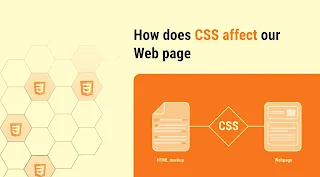Module 46: how to style Web Components using CSS.
Because Web Components use Shadow DOM, styling is scoped and encapsulated by default. use standard CSS, Shadow DOM CSS scoping, CSS custom properties, and :host selectors effectively.
1. Introduction to Web Component Styling
What is Shadow DOM?
Shadow DOM is a part of the Web Components standard that provides encapsulation for DOM and CSS.
Example:
html
code
<my-card></my-card> <script> class MyCard extends HTMLElement { constructor() { super(); const shadow = this.attachShadow({ mode: 'open' }); shadow.innerHTML = ` <style> p { color: red; } </style> <p>This is inside the Shadow DOM</p> `; } } customElements.define('my-card', MyCard); </script>
Explanation:
The <p> inside the Shadow DOM is red.
Styles defined inside the shadow root don't affect outside elements, and vice versa.
2. Styling Encapsulated Elements
:host Selector
Use :host to target the custom element itself from within its Shadow DOM.
css
code
:host { display: block; background-color: #f0f0f0; padding: 1rem; }
Usage Example:
javascript
code
shadow.innerHTML = ` <style> :host { border: 2px solid black; } </style> <div>Content inside</div> `;
Explanation:
:host styles the outer custom element (<my-card>) from inside.
:host([attribute])
Target the host based on attributes.
css
code
:host([highlight]) { border: 2px solid gold; }
3. Styling Slotted Content
Use the ::slotted() selector to style content projected with <slot>.
Example:
html
code
<my-card> <p slot="description">This is slotted content.</p> </my-card>
javascript
Copy code
shadow.innerHTML = ` <style> ::slotted(p) { font-style: italic; } </style> <slot name="description"></slot> `;
Explanation:
::slotted(p) only targets slotted <p> elements.
Cannot style nested elements inside slots—only the top-level slotted node.
4. Using CSS Custom Properties (Variables)
CSS custom properties allow users to override component styles from outside.
Component Definition:
css
code
:host { --main-color: blue; } p { color: var(--main-color); }
Outside Usage:
html
code
<my-card style="--main-color: green;"></my-card>
Explanation:
The color inside the shadow DOM becomes green.
Allows for theming and customization.
5. Style Inheritance and Global Styles
Global styles do not penetrate the shadow DOM.
How to Enable Some Styling Inheritance:
Inherit font-family, color, etc., using inherit keyword.
css
code
p { font-family: inherit; color: inherit; }
6. Advanced – Exposing Parts with ::part and part Attributes
Inside the component:
html
code
<div part="title">Title</div>
Outside component:
css
code
my-card::part(title) { font-weight: bold; color: navy; }
Explanation:
Allows external styles to apply to internal parts via part and ::part.
7. Practical Exercises
Exercise 1: Basic Styling Inside Shadow DOM
Create a <fancy-button> Web Component that uses a Shadow DOM and styles its internal <button> element.
html
code
<fancy-button></fancy-button>
js
code
class FancyButton extends HTMLElement { constructor() { super(); const shadow = this.attachShadow({ mode: 'open' }); shadow.innerHTML = ` <style> button { background: #6200ea; color: white; padding: 0.5em 1em; border: none; border-radius: 4px; } </style> <button><slot></slot></button> `; } } customElements.define('fancy-button', FancyButton);
Goal:
Students customize the button’s styles using ::part and CSS variables.
Exercise 2: Host Styling with Attributes
Create a <tooltip-box> Web Component that changes background color if the attribute highlight is present.
html
code
<tooltip-box highlight>Info</tooltip-box>
Expected:
Use :host([highlight]) to change style.
Exercise 3: Theming with CSS Variables
Create a reusable <theme-card> component that uses CSS variables for --card-bg and --text-color.
html
code
<theme-card style="--card-bg: #333; --text-color: #eee;">Dark Themed</theme-card>
Inside Shadow DOM:
css
code
:host { background: var(--card-bg, white); color: var(--text-color, black); }
8. Summary of Key Points
Concept
Description
Shadow DOM
Encapsulates styles inside components
:host
Styles the custom element from within
::slotted
Targets slotted elements from outside
CSS Variables
Allows external theming and customization
::part and part
Enables styling internal parts externally
9. Suggested Flow
(15–20 min):
Show browser dev tools to inspect Shadow DOM and styles.
Live Demo (10 min):
Build a basic Web Component with Shadow DOM.
Show styling with :host, ::slotted, and CSS variables.
Hands-On (20–30 min):
Challenge: Create a theme-switchable component.
Q&A and Recap (10 min)
10. Assessment Suggestions
Mini Project: Build a styled profile-card Web Component using Shadow DOM and customizable with CSS variables.
Quiz: Identify how and when to use :host, ::slotted, and ::part.
Code Review: Share styled components for peer review.








No comments:
Post a Comment